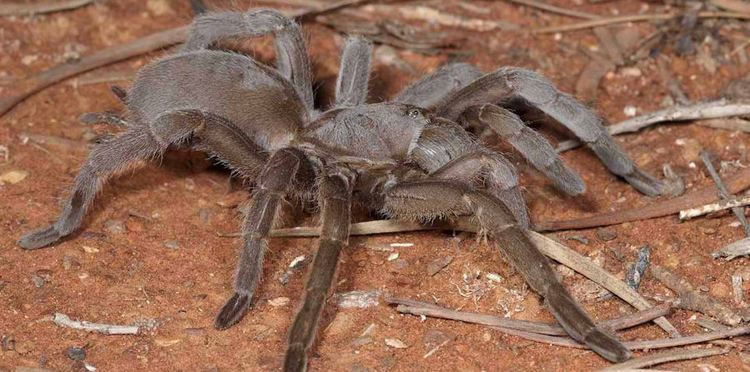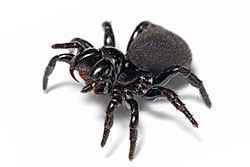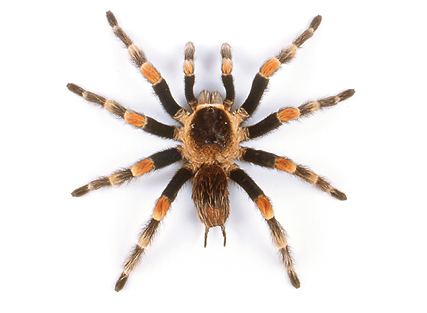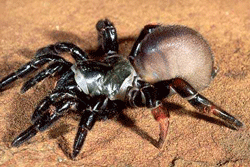Rank Infraorder | Scientific name Mygalomorphae Order Spider | |
 | ||
Lower classifications | ||
The Mygalomorphae or mygalomorphs are an infraorder of spiders. The name is derived from the Greek mugalē, meaning "shrew", plus morphē meaning form or shape. An older name for the group is Orthognatha, derived from the orientation of the fangs which point straight down and do not cross each other (as they do in the araneomorphs).
Contents

Description

This group of spiders comprises mostly heavy bodied, stout legged spiders including tarantulas, Australian funnel-web spiders, mouse spiders, and various families of spiders commonly called trapdoor spiders.

Like the "primitive" suborder of spiders Mesothelae, they have two pairs of book lungs, and downward pointing chelicerae. Because of this, the two groups were once believed to be closely related. Later it was realized that the common ancestors of all spiders had these features (a state known as symplesiomorphy). Following the branching into the suborders of Mesothelae and Opisthothelae, the mygalomorphs retained them, while their fellow Opisthothelae members, the araneomorphs, evolved new "modern" features, including a cribellum and cross-acting fangs.
Like spiders in general, most species of Mygalomorphae have eight eyes, one pair of principal and three pairs of secondary eyes. But there are also species with six, four, two or no eyes.
Their chelicerae and fangs are large and powerful, and have ample venom glands that lie entirely within their chelicerae. These weapons, combined with their size and strength, make Mygalomorph spiders powerful predators in the arthropod kingdom. Many of these spiders are well adapted to killing other large arthropods, and will also sometimes kill small mammals, birds, and reptiles. Despite their fearsome appearance and reputation, most mygalomorph spiders are not harmful to humans, with the exception of the Australian funnel-web spiders, especially those of the genus Atrax.
While the world's biggest spiders are mygalomorphs—Theraphosa blondi (Latreille, 1804) has a body length of 10 cm, and a leg span of 28 cm—some species are less than one millimeter long. Mygalomorphs are capable of spinning at least slightly adhesive silk, and some build elaborate capture webs that approach a meter in diameter.
Unlike Araneomorphae, which die after about a year, Mygalomorphae can live for up to 25 years, and some do not reach maturity until they are about six years old. Some flies in the family Acroceridae which are endoparasites of mygalomorphs may remain dormant in their book lungs for as long as 20 years before beginning their development and consuming the spider.
Evolution and phylogeny
Megarachne servinei was thought to be a giant mygalomorph from the Upper Carboniferous (ca. 350 million years ago), but was later found to be an eurypterid. Thus, the oldest known mygalomorph is Rosamygale grauvogeli (Hexathelidae) from the Triassic of north-east France. No mygalomorphs from the Jurassic have yet been found.
One hypothesis for the relationship between the families is:
Distribution
Most members of this infraorder occur in the tropics and subtropics, but their range can extend farther north, e.g. into the southern and western regions of the United States.
Only a few species occur in Europe. These are of the families Atypidae, Nemesiidae, Ctenizidae, Hexathelidae, Theraphosidae and Cyrtaucheniidae, together with only a dozen species.
However, it is suggested that the Mygalomorphae were distributed world-wide before the breakup of Pangaea.
